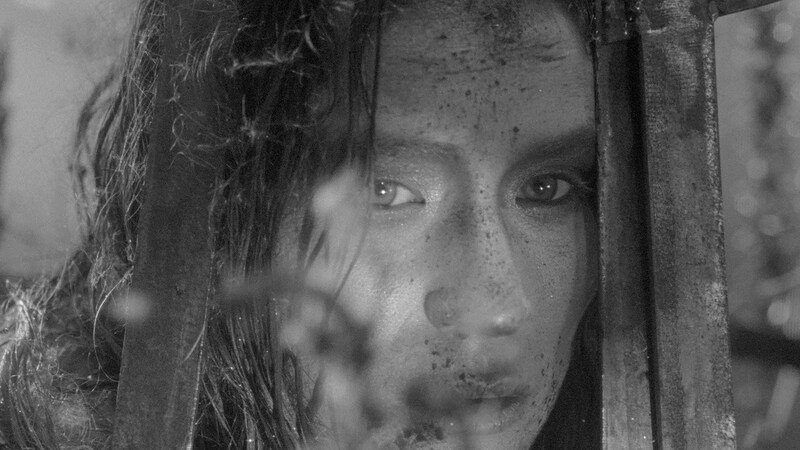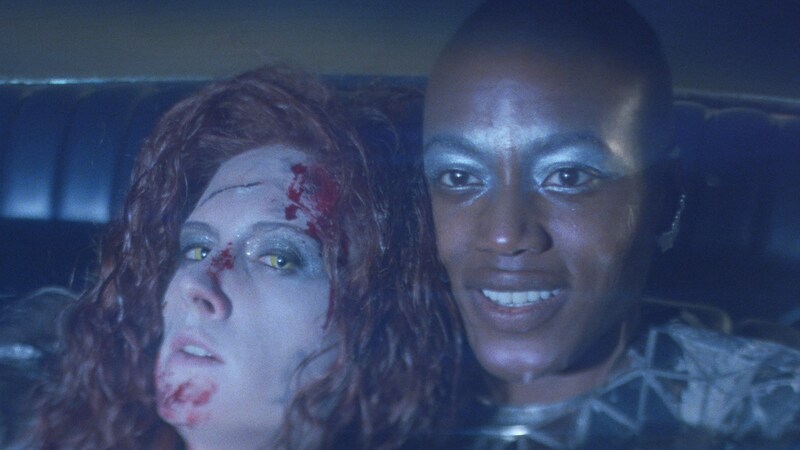Locarno 2023 Review: CONANN Goes to Hell and Back Through Taboos, Myths, Genres, Ages
French provocateur Bertrand Mandico goes on a oneiric journey with Elina Löwensohn as the unorthodox guide in another gender- and genre-bending fauvistic fantasy.

French auteur Bertrand Mandico has earned a reputation as one of contemporary cinema's most intriguing and inventive talents.
With an extensive portfolio of experimental short films under his belt, Mandico first gained widespread recognition through his feature-length debut, Wild Boys. This film set the stage for his unique cinematic vision, one that employs a surrealistic approach to merge narrative and form in a manner that eschews naturalism. His subsequent work, After Blue, further explored this dreamlike narrative structure, imbued with a complexity of themes.
Mandico returned to Locarno with his latest work, Connan, while also screening the complete Barbarian cycle, in which Connan serves as a central element. Though the film bears a fleeting resemblance to Robert E. Howard's creation, Mandico deftly shifts the narrative from a testosterone-driven saga to a gender-fluid, unconventional romance. The story traverses from the underworld to the earthly realm and back again, crossing various epochs and extending even into the afterlife.
In this latest endeavor, Mandico reunites with his long-time collaborator Elina Löwensohn, who dons canine prosthetics to portray Rainer, the guardian of the underworld. Named in homage to the German cinematic maverick Rainer W. Fassbinder, Rainer serves as a Virgil-like guide to Connan the Barbarian, reimagined here as a formidable Amazon.
As the duo embark on a journey recounting Connan's past six lives, each death ushers in a new chapter and transformation, spanning a diverse array of epochs and mythologies, from the Sumerian era to a near-futuristic dystopia. In a unique casting twist, each of Connan's lifecycles across different ages is enacted by a different actress. The ensemble includes Christa Theret, Julia Riedler, Claire Duburcq, Sandra Parfait, Agata Buzek, Nathalie Richard, and, lastly, Françoise Brion.
The fluidity of gender is merely an entry point as Mandico, known for his genre-defying tendencies, crafts an alchemical blend of disparate elements. Seamlessly interweaving tones and themes —ranging from the sublime to the grotesque, from comedy to tragedy, from the explicit to the implicit— Mandico transforms Connan into a cinematic tapestry of unique resonance. Far from a mere retelling of Robert E. Howard's creation, the film emerges as an audacious crossover between Dante's Divine Comedy and Goethe's Faust, infused with a distinctive twist on the myth of Orpheus. The end result is a singular love narrative, enshrouded in a violent and hallucinatory odyssey of self-empowerment.
In Connan, Mandico employs his hallmark oneiric style, laden with poetic transgressions and provocative undertones that nod to influences ranging from Jean Cocteau to Jan Švankmajer via Walerian Borowczyk. However, the director carves out his own imaginative universe, having already distinguished his singular aesthetic in previous works.
Captured predominantly in black and white on a 35mm lens by cinematographer Nicolas Eveilleau, who also worked on Mandico's After Blue, the film maintains the ethereal quality for which the director is known. Mandico's audacious vision persists here, seamlessly weaving camp elements into sociopolitical satire while also expanding his repertoire with bolder visual choices. The film delves into various manifestations of barbarism, exploring its allegorical dimensions in ways that are both unsettling and compelling.
Connan, initially conceived as a theatrical production, successfully transitions to film under Mandico's direction while retaining its stage-oriented DNA. Each chapter of the film is confined to a single location, adhering to the Aristotelian unities of time and space to encapsulate the various reincarnations of the protagonist. Despite these spatial constraints, each segment unfolds as a visually arresting tableau.
Production designer Anna Le Mouël collaborates effectively with Mandico to bring his otherworldly vision to the screen, utilizing genre props in ways that radically reinterpret, and at times even subvert, the traditional sword-and-sorcery genre. The film doesn't shy away from incorporating shocking and provocative elements, including Nazi paraphernalia, mass graves, and instances of autophagy, contributing to the phantasmagorical, fauvistic tapestry Mandico weaves in this hybrid cine-theatrical opus.
The Locarno Film Festival presented not just Connan, but the entire Barbarian cycle, which also includes two short films: We Barbarians and Rainer, a Vicious Dog in Skull Valley. These works, though filmed on the same sets and featuring the same cast as Connan, operate as meta-cinematic companion pieces. They offer a nuanced commentary on the film industry and the contemporary state of cinema.
The film recently screened at the Locarno Film Festival.
Conann
Director(s)
- Bertrand Mandico
Writer(s)
- Bertrand Mandico
Cast
- Elina Löwensohn
- Christa Théret
- Julia Riedler








